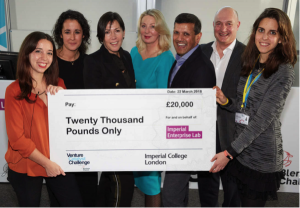by Ana Luisa Neves, General Practitioner and Research Associate at Imperial NIHR PSTRC
 Making motherhood safe is a human rights imperative. In the last 20 years, a steady decline has been observed in maternal mortality rates worldwide, but much more needs to be done: nearly 300,000 women still die every year because of pregnancy or childbirth-related complications (1). This means that a mother dies every two minutes.
Making motherhood safe is a human rights imperative. In the last 20 years, a steady decline has been observed in maternal mortality rates worldwide, but much more needs to be done: nearly 300,000 women still die every year because of pregnancy or childbirth-related complications (1). This means that a mother dies every two minutes.
Ninety-nine per cent of these deaths occur in developing countries, though particularly in rural or isolated areas, reflecting the inequities in access to health care (2-4). Many of them are related to infectious diseases. By 2013, 13 countries had a proportion of AIDS-attributable maternal deaths of 10% or more (5). To mitigate this burden, the World Health Organisation (WHO) recommended that HIV testing and counselling should be provided routinely in the package of care received by pregnant women in the antenatal setting. It should, furthermore, be integrated into a multifaceted test for syphilis and other clinically relevant infectious agents (5). Several studies demonstrated that universal screening for these infectious conditions reduces mortality and is cost-effective (6-8).
Unfortunately, not all women have access to these tests. Having worked as a volunteer doctor in rural Senegal, I vividly remember in particular one clinic in the district of Bambey. The clinic was not a regular clinic; nor did it have a regular waiting room. Women waited for their appointments under the shadows of trees which sparsely populated the area. Many of these were pregnant women. For most of them, no antenatal infections screening was available. At other clinics nearby, they would be advised to go to a more central facility — a three to four hours’ walk in the sun — where their blood would be collected and transported in suboptimal conditions to finally be tested.
For most of them, this was not a choice. Simply because they lived outside of the city, their chances to access healthcare, to have a timely diagnosis, and to prevent the transmission of infectious disease to their babies were considerably reduced. But would this change if there was an affordable and efficient way to bring prenatal screening to the places these people live?
This was one of the stories that inspired the development of momoby: a finger prick test that, using a single drop of blood, screens for HIV, syphilis, and hepatitis B, in real-time. Compared with traditional venepuncture procedures, finger prick testing is more user-friendly and has easier logistics: it is small, convenient, and has no specific temperature requirements, meaning that you could actually take it, in your pocket, to where it is most needed. Finger prick testing therefore offers a promising opportunity to timely diagnose and treat these women and, consequently, to reduce the transmission of HIV, hepatitis B, and syphilis to the newborns.
At momoby, we are working to further develop and validate the prototype, while establishing strategic relationships with local partners in low and middle income countries (LMICs) to co-design and optimise our solution, and to better understand the needs and opportunities for implementation. The enthusiasm of healthcare professionals working in rural settings in LMICs is unquestionably highly valuable in healthcare delivery; building trust and enhancing partnerships with these key stakeholders will therefore be critical for ensuring that pregnant women living in these areas can have the quality of care they deserve.
As part of the Ending Preventable Maternal Mortality (EPPM) Programme, the WHO aims to eliminate significant inequities in the quality and safety of care, both within and among countries. Irrespective of where she lives, every pregnant woman has the same needs, expectations, and dreams — and the most important are to be a healthy mother and to deliver a healthy baby. With momoby, we hope to support them in their journey.
Momoby was awarded at WE Innovate Imperial 2017 (2nd prize) and at the Venture Catalyst Challenge 2018 (1st prize), and selected as one of the 500 most promising start-ups worldwide at the Hello Tomorrow Challenge 2017. It was also showcased in the blogs of UN Women and of the World Economic Forum.